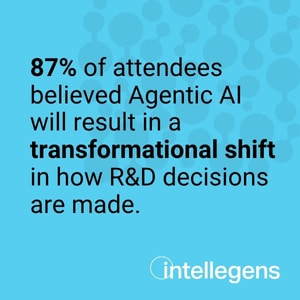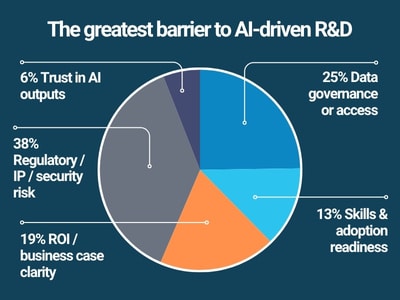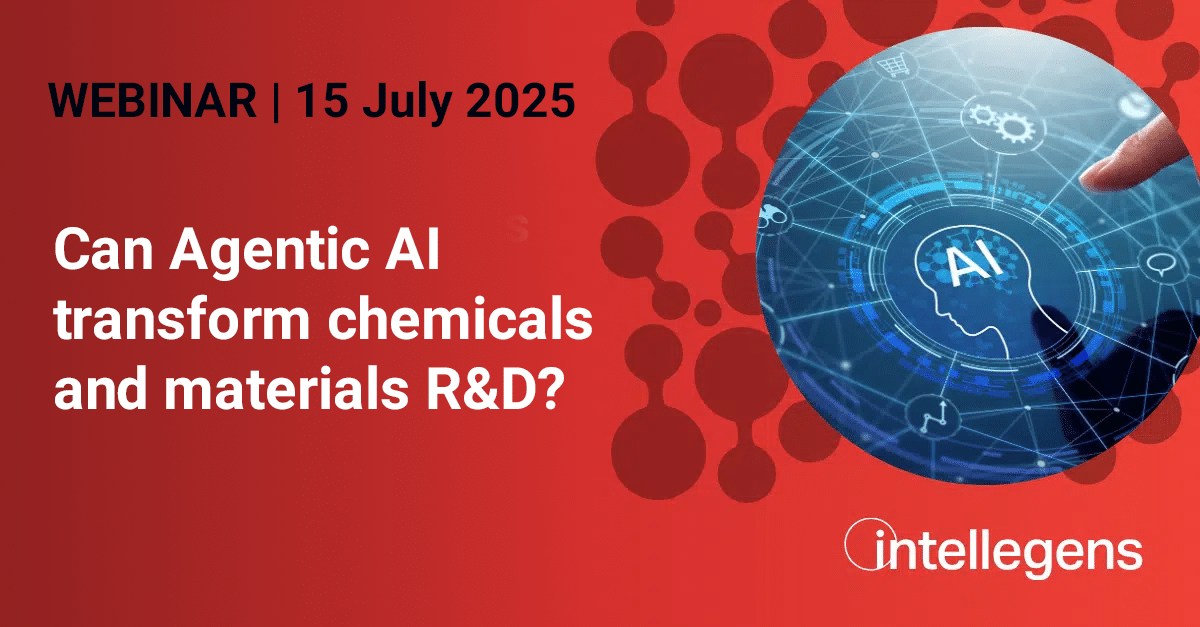Another month, another AI buzzword. Now it’s ‘Agentic AI’. After LLMs, ChatGPT, bots, generative AI, do I really need to get to grips with another concept? If you’re interested in optimizing chemicals or materials R&D, here’s why this one might be worth checking out.
When we ran a seminar on agentic AI for research leaders recently, 87% believed agentic AI would result in a transformational shift for R&D.

Agentic AI refers to software-based agents that not only process information but actively solve tasks by orchestrating the right tools and workflows across complex digital environments.
In the R&D context, its perhaps easiest to think of this in terms of a network of software agents, each of which embodies a research ‘persona’. So, you might ask a ‘research scientist’ agent: “Find a chemical formulation that meets this customer requirement”. It might access the company database of formulations and show you the best matches among known formulations. But it might also suggest that it is worth investigating new formulation options. This could trigger a request to a ‘design of experiments expert’ agent, which might gather the necessary data and run a machine learning-enabled DOE tool to propose a set of experiments that seem likely to find a better match. That could in turn ask a ‘research manager’ agent to trigger the process for review and approval of this project.
Although each of these agents would use Large Language Models (LLMs) as their reasoning engine, they would go well beyond simply finding information and providing guidance by actually calling-in other software tools to perform tasks and by connecting with each other and with other systems to initiate processes. There is obvious potential not only to speed up decision-making, but also to drive action along the most productive pathways. That’s why those seminar attendees were sure agentic AI will be transformational.


But this picture of benevolent AI servants scuttling around in digital space to make your life easier is, of course, in its early stages. Not only do we need to develop and integrate agentic technology, we also need to think through multiple organisational, ethical, and process implications. When we asked the seminar attendees what they thought was the greatest barrier to AI-driven R&D, their responses (above) were quite interesting. Whereas, five years ago, scepticism about AI outputs might have dominated, these concerns seem to have waned. The focus was on how agentic AI implementations might handle risks in data governance, IP, regulatory issues, and security.
As the industry faces and addresses such challenges, there are two reasons why Intellegens is well positioned to take a lead:
- Central to the idea of agentic AI is connecting software tools. Our Alchemite machine learning already powers tools that tackle key R&D tasks like design of experiments and formulation development.
- Our expertise is in rendering AI usable, for example, through the Alchemite Suite apps, which already map on to some of the key R&D personas that AI agents will need to match.
We’re working on the use of agentic AI in our products, beginning with tools to guide users as they employ our Alchemite apps. And we shared a roadmap for agentic at Intellegens at the recent seminar – you can read a summary report from that event. And you can learn more at our upcoming webinar on agentic AI.
So, yes, agentic AI is a concept worth getting to grips with. But the good news is it’s not too late – now is the time to start thinking through the implications for your R&D operations.

